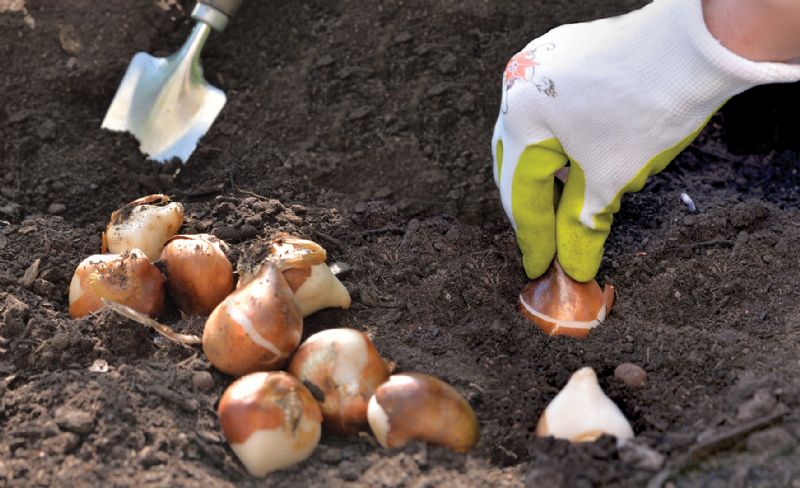- Home
- News, Articles & Reviews
We are hiring! Please click here to join our growing magazine delivery team in Gloucestershire!
Areas
Homes & Gardens
Archive

Don’t down tools just yet
All Areas > Homes & Gardens > In the Garden
Author: Daniel Hoggins, Posted: Tuesday, 22nd October 2024, 09:00
As the growing season comes to an end and the old adage of putting the garden to bed echoes throughout the land, you could be forgiven for thinking that now is the time to head indoors and draw the curtains on the garden until spring.
While there is no harm in doing so, provided the tender plants are suitably protected, gardening has always been a two-way street; the more effort you put into it, the greater your reward. Whether you favour floral displays, homegrown harvests or improving biodiversity, there is plenty to do in the garden this month and the simple act of doing it is often the greatest reward of all.
Splash out on spring bulbs
The biggest job to do now in preparation for some real spring beauty is splash out on some spring bulbs. It is never a bad idea to get as many as you can justify to yourself. Snowdrops, crocus and reticulate iris offer early colour, while daffodils, tulips, alliums and muscari will brighten up any garden a little later into spring and be a vital food source for bees as they begin to wake up.
November is a great time to plant bare root fruit trees. Getting them as bare root plants means they will be cheaper, and planting them now ensures they get a full growing season to get established next year.
Allowing them to build their own support network of roots
Do be aware, though, not to stake them too rigidly; I prefer to support them with a bamboo cane that will keep them upright but not stop them moving in the wind. They need to be able to be blown about a bit in order to build up their own anchoring support network of roots. If they are tied tightly to a large post their roots will not develop and as they get more mature they will be more likely to fall over.
If you are lucky enough to have any ivy growing in your garden then be sure to leave that well alone at the moment. Its late flowering habit is an invaluable source of nectar, scarce at this time of year. The berries that follow will also be a good source of food for your garden birds throughout the winter.
Offering food and protection for birds and hibernating insects
It is also a good idea to leave some perennial plants standing and not cut back their seed heads just yet. Teasel, fennel and sedum all look architecturally great when left to brown off in the garden, especially when they get caught by a frost. But in leaving them they also offer food and protection for birds and hibernating insects.Other Images
Copyright © 2025 The Local Answer Limited.
Unauthorized use and/or duplication of this material without express and written permission from this site's author and/or owner is strictly prohibited. Excerpts and links may be used, provided that full and clear credit is given to The Local Answer Limited and thelocalanswer.co.uk with appropriate and specific direction to the original content.More articles you may be interested in...


© 2025 The Local Answer Limited - Registered in England and Wales - Company No. 06929408
Unit H, Churchill Industrial Estate, Churchill Road, Leckhampton, Cheltenham, GL53 7EG - VAT Registration No. 975613000You are leaving the TLA website...
You are now leaving the TLA website and are going to a website that is not operated by us. The Local Answer are not responsible for the content or availability of linked sites, and cannot accept liability if the linked site has been compromised and contains unsuitable images or other content. If you wish to proceed, please click the "Continue" button below:




